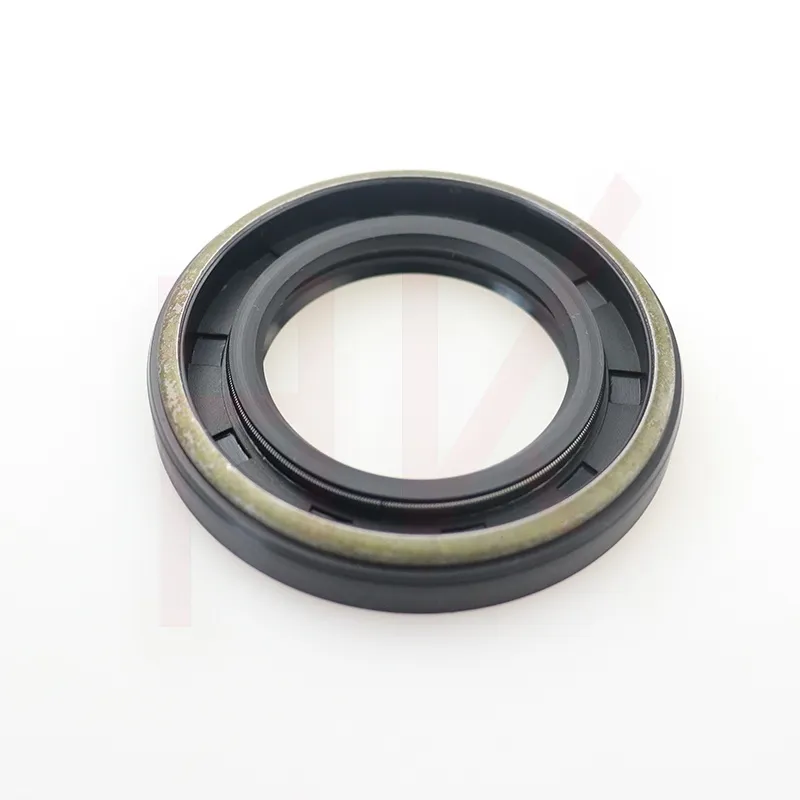Nov . 30, 2024 18:52 Back to list
High-Performance Rotary Shaft Seals for High-Pressure Applications and Enhanced Durability
High Pressure Rotary Shaft Seal An Overview
In the realm of mechanical engineering, the rotary shaft seal is an essential component, particularly in systems that operate under high-pressure conditions. These seals are designed to prevent the leakage of fluids while allowing for the rotational motion of components. When it comes to high-pressure applications, the design and material selection for rotary shaft seals become critical in ensuring durability, performance, and reliability.
What is a Rotary Shaft Seal?
A rotary shaft seal, often referred to as a lip seal, is a circular sealing element that sits around a shaft. It typically consists of a flexible sealing lip that makes contact with the rotating shaft, creating a barrier that prevents fluid leakage between the static and moving parts of a machine. High-pressure rotary shaft seals are specifically engineered to withstand the rigors of elevated pressures, high speeds, and varying temperatures, making them indispensable in various industrial applications, from hydraulic systems to automotive engines.
Components and Design Features
High-pressure rotary shaft seals usually comprise three main components the seal body, the sealing lip, and a spring. The seal body is typically made from materials such as elastomers or thermoplastics that can maintain their integrity under high-pressure conditions. The sealing lip is designed to ensure a tight fit against the shaft, minimizing any potential leakage. Springs may be employed to apply additional force to the sealing lip, enhancing the seal's effectiveness and maintaining contact under varying operational conditions.
One of the key design considerations for high-pressure rotary shaft seals is the choice of materials. Common materials include fluorocarbon elastomers (such as Viton), nitrile rubber (NBR), and silicone, each offering specific advantages in terms of chemical resistance, temperature tolerance, and wear properties. The selected material must be compatible with the fluids they will encounter, as improper material selection can lead to premature failure of the seal.
Applications in High-Pressure Environments
high pressure rotary shaft seal

High-pressure rotary shaft seals find applications across a wide range of industries. In the automotive sector, they are commonly found in engines and transmissions, where they prevent oil leaks that could lead to performance issues or engine damage. In hydraulic systems, these seals are crucial in pumps and cylinders to ensure that hydraulic fluid remains contained, allowing for efficient operation of machinery.
Additionally, the oil and gas industry employs high-pressure rotary shaft seals in drilling operations and equipment, where they endure extreme pressures and harsh environments. In aerospace applications, they are used in various systems to ensure reliable sealing in critical components, such as engines and landing gear.
Challenges and Solutions
Despite their importance, high-pressure rotary shaft seals face several challenges. High pressures can lead to increased wear and tear, and temperature fluctuations may cause material degradation over time. Moreover, contaminants and particulates can compromise seal integrity, leading to leaks.
To combat these challenges, engineers are continually researching and developing advanced sealing technologies. Innovations such as reinforced seal designs, improved surface finishes on shafts, and the use of self-lubricating materials are just a few strategies being employed to enhance seal performance. Additionally, incorporating external protective covers can shield seals from contaminants, further extending their lifespan.
Conclusion
In conclusion, high-pressure rotary shaft seals are vital components that ensure the proper functioning of various mechanical systems. Understanding their design, materials, applications, and challenges helps engineers and manufacturers create better solutions for their specific needs. As technology advances, the demand for more efficient and long-lasting seals will continue to grow, driving innovation in this critical area of engineering. Proper maintenance and timely replacements further enhance the reliability of these seals, ultimately contributing to the overall efficiency and longevity of machinery and equipment.
-
The Trans-formative Journey of Wheel Hub Oil Seals
NewsJun.06,2025
-
Graphene-Enhanced Oil Seals: Revolutionizing High-Pressure Oil Sealing
NewsJun.06,2025
-
Future of Hydraulic Sealing: Advanced Intelligent TCN Oil Seals
NewsJun.06,2025
-
Don’t Let a Broken TCV Oil Seal Ruin Your Day
NewsJun.06,2025
-
Bio-Inspired Dust Seals for Better Sealing Performance
NewsJun.06,2025
-
Biodegradable and Sustainable Hydraulic Seal Materials
NewsJun.06,2025
-
Top Oil Seal Solutions for Your Industrial Needs
NewsMay.22,2025
Products categories
















